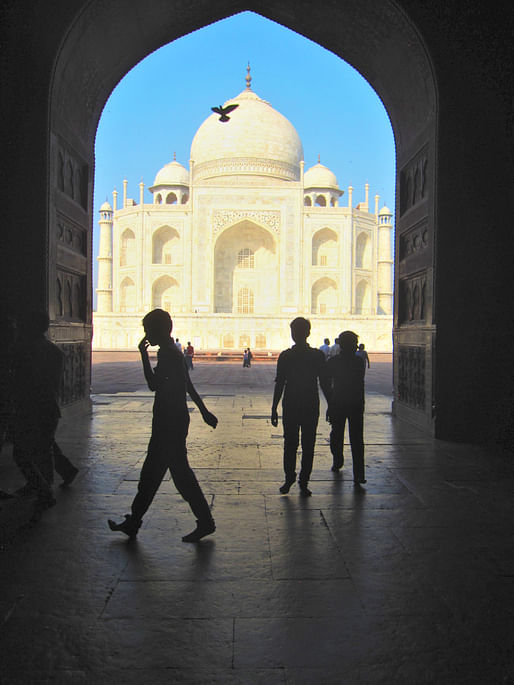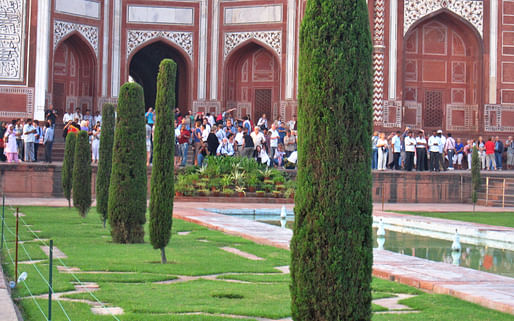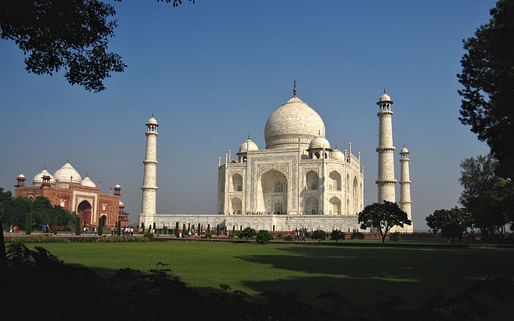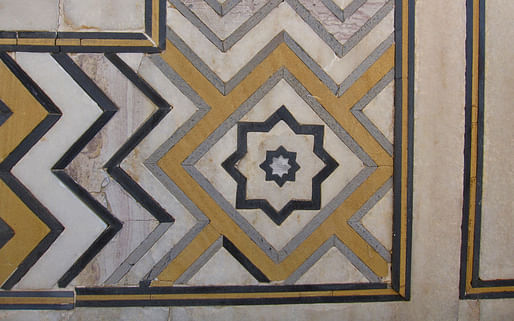
Jul '12 - Jan '13
And alas we reach the climax, the zenith of a journey and the symbol of a country. When one hears the name India uttered, it is the like image in all minds of which transpires. It comes to rest on travel brochures from here to kingdom come, and is plastered across every tourist office billboard in India. It is the most threadbare, misrepresenting, beautiful photo in all of India, and I shudder to think how many copies of it exist in the world. If one has not the image in mind to which I speak, I applaud ones bohemianism in refusing to ever read a travel magazine, frequent an Indian restaurant or surf the Internet.
Stone white edifice, grand arches and a colossal dome flanked by four solemn minarets, two of which retreat into perspective. Resting boastfully atop their plinth, as the reflection in her lotus pool lures the mind away from reality, to a dreamy childhood fantasy. Then one meets the shoulders of two Lithuanians, is cut off by a Korean, and told to abandon frame by an Indian. It is a scramble, a bloody war to stand centerfold and snap but one photo. And heaven forbid you wish to take it with no bodies in view. After witnessing such a spectacle I shall call the Reserve Bank of India and suggest they make their currency from pictures of the Taj Mahal, as it would seem their value is immune to hyperinflation.
One enters the Taj from its south door, aligned yet still with her watery axis, but instead of the elegant tombs in view one finds the most decorated stockade this earth shall ever see. It is a marble screen, or a jali as they say. It is 6 ft in height and functions quite well in keeping weary travelers from plopping down for a rest on Mumtaz Mahal's pseudo-tomb. But it turns the Parthenon into a revolving promenade and removes all focus from the tomb. One may assume also that the glance of thousands of visitors a day shall corrode it into dust, as no clear view is possible through this chain link fence. Yes, the tomb itself is forlorn as even the tour guides glorify the ten thousand varieties of ‘precious and semi-precious stones’ within the fence with no more than a mention of the tomb itself. It’s the noblest obstruction, the most elegant annoyance, the most decorated velvet rope the world shall ever see.
There is never a lack of guards in India, and the Taj is no exception. They are men of authority, stone cold, and immune to the jest, which is justification enough for ones laughter at their absurd juxtaposition in attire. Their uniforms are of brown and tan camouflage, which helps them blend into the misty white glare of the Taj, a British style beret caps their tops and black army boots help add to the mystique. Their Taj adaptation are the softest yellow booties, worn over thick black leather army boots, and from afar, they appear as teddy bear slippers. If they ever moved more than a few steps in a day, I would think they doubled as the polishing crew.
According to the pragmatic Indian, it is best if one remains ignorant to the details, as history is seldom more fanciful than what our minds may conjure. It would seem that dear Jahan was quite fond of building, doing so rigorously throughout his reign; for the rare occasion one finds a ‘gem of the palace’ is reason enough to build a monument. The woman to which the Taj is so graciously dedicated, Mumtaz Mahal, was the fourth of seven wives of Jahan, Mumtaz' sister being number five. The legend of her beauty may hold credit in her bearing of 14 of his 16 children, which in my book is a feat worthy of such a grave.
As I sat on a bench amidst the trees and breeze, I wondered what the people of Agra might have said, if Jahan were to have held a town meeting regarding his plans to build the Taj. Perhaps Jahan might end his pitch with, “and so, because one of my wives was so tremendously good looking, I wish to tax all of you to the amount of 500 kilos of gold for the next 12 years in order to pay for materials from another state and labor from another country." He should have concluded with the assurance that their eternal posterity shall have indefinite employment in the tourism business.
 From the guest house
From the guest house
 The warriors of the photo during the light morning
The warriors of the photo during the light morning
 A pleasant contradiction
A pleasant contradiction
 From the garden
From the garden
 The work of her lowliest mason
The work of her lowliest mason
An Indo Inquisition is a thirteen-week train expedition across India. The journey will document the influences of international modernism and British occupation, as well as compare the effects of wealth accumulation, culture, religion, and poverty with economic growth and their effect on the built environment.
1 Comment
bravo!
Block this user
Are you sure you want to block this user and hide all related comments throughout the site?
Archinect
This is your first comment on Archinect. Your comment will be visible once approved.